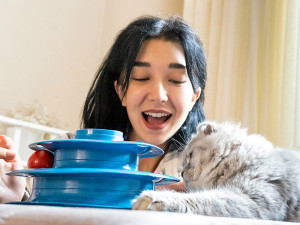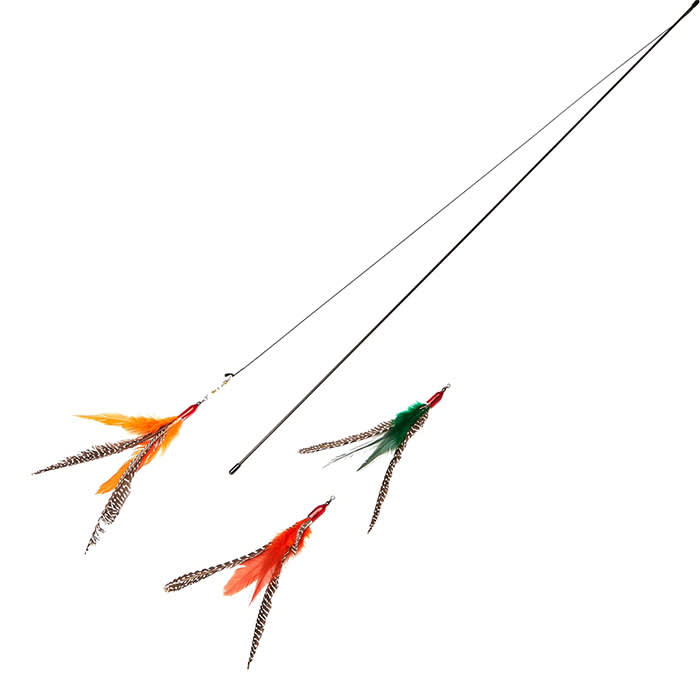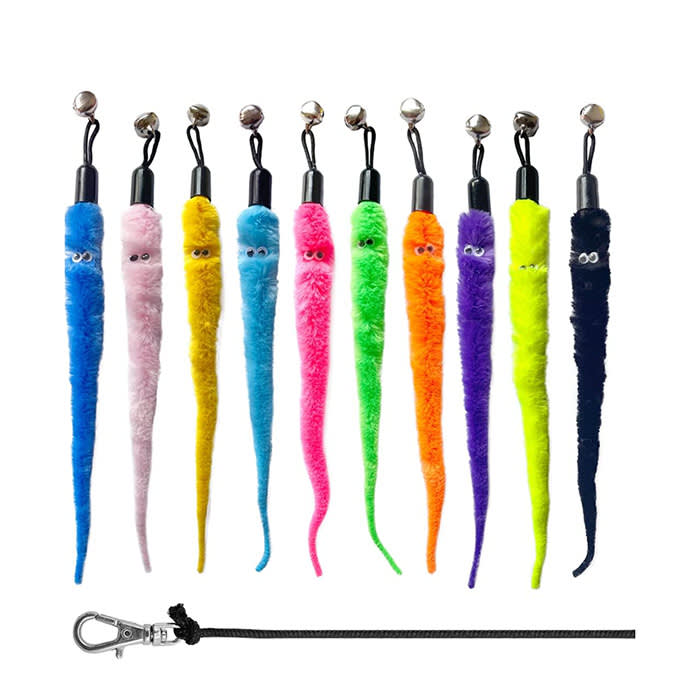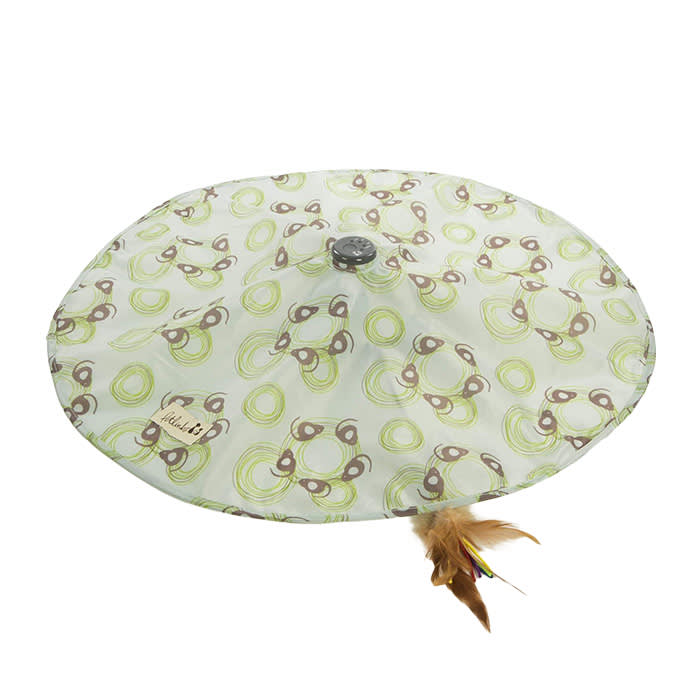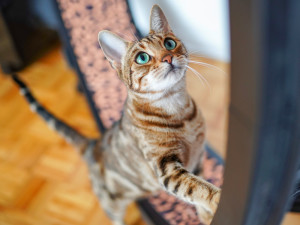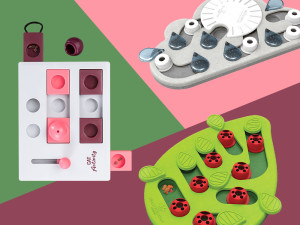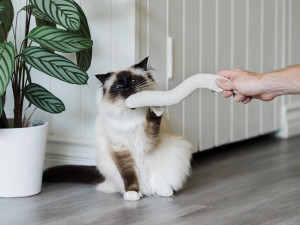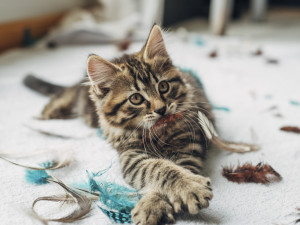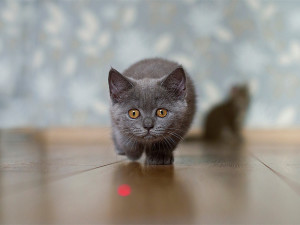These 4 Toys Act Like Prey to Satisfy All Your Cat’s Hunter Instincts
Your kitty will thank you.
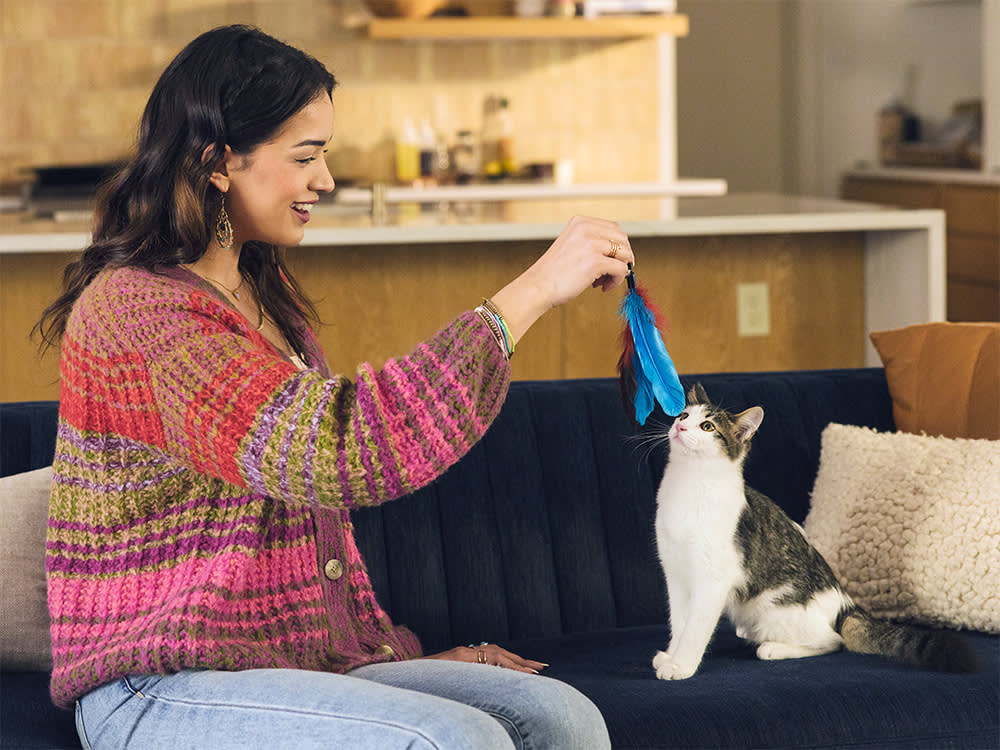
Share Article
At their core, all cats are hunters — cuddly, fluffy, occasionally derpy hunters, but hunters nonetheless. Before they domesticated themselves some 10,000 years agoopens in new tab, the wildcat forefathers of our modern feline friends roamed the deserts and grasslands of North Africa and the Middle Eastopens in new tab in search of prey — lizards, birds, and their favorite: rodents. As these rodents were drawn to the storehouses and farms of neolithic humans, the cats followed, feasting on the grain-fattened furballs.
Humans were happy for the free pest control, and in time invited the cats into their homes not just as mousers, but as companions. Of course, most modern domesticated cats never hunt a day in their life, but even the most gentle among them still has a hunter’s instincts, honed over millennia on the African plains. They want to hunt. They need to hunt. And if they can’t hunt, they at least need to play.
“Cats are a predatory species,” says Dr. Marci Koski, certified feline behavior and training consultant at Feline Behavior Solutionsopens in new tab. “They are barely domesticated and programmed to hunt, so if we don’t give them those opportunities through play, they can get bored, which can lead to depression, destructive behaviors, stress, house soiling, aggression, and more.”
To avoid these issues and keep your cat satisfied, Dr. Koski suggests two play sessions per day: one in the morning and one in the evening. “These are the times of day when a cat’s prey are most active,” she says, so cats are predisposed to be active at this time as well.
Each play session should be about 10 to 15 minutes long and allow the cat to act out their full prey sequence multiple times. “The prey sequence [is a four-step process that] mimics their hunting behavior in the wild,” Dr. Koski says. It starts with staring, then progresses to stalking and chasing, followed by pouncing and grabbing, and ending with the delivery of the fatal “kill bite.”
Btw, our editors (and their pets) picked out these products. They’re always in stock at the time we publish, but there’s a chance they’ll sell out. If you do buy through our links, we may earn a commission. (We’ve got a lot of toys to buy over here, you know?)
Go for a toy that represents real prey.
The best toys for such forms of play are the ones that most closely replicate the movement of a cat’s actual prey. And for Dr. Koski’s money, that means just one thing: the classic wand toy.
“My personal favorite is Da Bird,” she says. “It’s long — about six feet — so as you’re playing with it, you won’t be standing in the middle of the hunting ground. Shorter wands are great for kittens, but something longer makes cats work a little more, so they can move around and use the space without you getting in the way.”
Da Bird’s design is simple, but that’s what Dr. Koski likes about it. “There is nothing to distract from the lure at the end of the wand,” she says. “And there is a clip at the end of the string, so you can change the lures out.” This allows you to experiment and figure out which lures are most appealing to your cat.
You can also try lures.
There are four main types of lures that resemble prey: feather lures, rodent lures, insect lures, and snake/lizard lures; preferences vary from cat to cat. If your cat was born outside to a feral mother, Dr. Koski says their lure preference could be the result of the types of food their mother brought back to the lair when she was teaching them how to hunt.
If she was adept at catching birds, they might respond more strongly to feather lures. If she brought them lizards, they might prefer squiggly lures. Whatever their preference, it’s a good idea to get a few different lures so you can switch them out and help keep things interesting.
It’s also important to remember when playing with a cat that there will be periods of stillness. At times, your cat may even walk away from the play area, but this doesn’t necessarily mean the game is over. “Cats can be big fakers,” Dr. Koski says. “They might look like they are walking away, but then you’ll see them staring from behind the door jam, so it is important to keep moving the wand around.”
Or find a toy with random movement.
If you already have a wand toy and are really keen to try something else, Dr. Koski does have a few suggestions, but she warns that none of them are likely to be as engaging as a furball on a stick.
“The Mystery Motion [toy] is good,” she says. “The movement is sort of random, so it more closely resembles prey in that sense, and it’s also sort of like the under-the-covers game you might play where you move your foot around under the covers and your cat pounces on it.”
Your cat might enjoy a toy they have to work to keep up with.
For more interactive play, Dr. Koski recommends the Ambush toy. “It’s sort of like whack-a-mole for cats and mimics prey like small rodents or insects that might hide in holes and crevices,” she says.
Dr. Koski warns, however, that automatic toys like these can be frustrating for cats, because they never get the satisfaction of actually catching and killing their prey and are thus denied a full circuit of their prey sequence. She also advises that playtime with automatic toys be supervised and that toys be turned off when the play session is over.
Put these toys at the bottom of the list.
Laser pointers
Dr. Koski isn’t keen on laser pointers, though she understands why cats find them fascinating. “The bright light is attractive to them,” she says. “And the movement mimics the movement of highly active bugs,” but it can ultimately stress them out to never actually capture that little red dot, no matter how fast they run or how high they jump. Constant frustration can turn them off play, which will only lead to problems for both cat and human down the road.
Automatic balls
“I think the majority of cats just aren’t going to be into them,” she says. “They don’t really resemble prey. Sure, they can move around on their own, but they don’t really move like prey moves, so for most cats, they are going to be a non-starter. Or they might find them interesting at first in a what-is-this sort of way, but at the end of the day, I think most cats would rather play with a milk jug lid than some baffling little ball they don’t understand.”
Whatever you decide to play with, Dr. Koski recommends ending the session with a treat or even a full meal. “Eating is part of the larger sequence of hunting, eating, grooming, and sleeping,” she says, so the more you are able to honor this natural progression in your cat’s day, the more satisfying they will find your play sessions and the happier they will be.
References:

Charles Manning
Charles Manning is an actor and writer based in New York City. In his free time he likes to cook, go swimming at the public pool, volunteer at the LGBTQ senior center, and foster senior and special-needs cats. His work has previously appeared in Cosmopolitan, Elle, Marie Claire, Harper’s Bazaar, Seventeen, and Nylon.
Related articles
![Bengal cat running on indoor wheel]()
11 High-Tech Toys Your Cat Will Go Wild For
Stoke your little lion’s hunting instinct with these electronic cat toys.
![Three cat puzzles on a colorful pink, burgundy, and green color-block background]()
The Best Puzzles to Unleash Your Cat’s Inner Einstein
Genius takes many forms. Could your cat be one?
![A fluffy Siamese cat sitting on the wooden floor playing with a the Snake Cat Toy from Boba and Vespa next to a striped Calathea plant]()
7 Cat Kicker Toys That Will Help Your Cat Beat Their Boredom
The cat kicker toys that will keep your cat booked and busy (and kicking like they’re Megan Rapinoe).
![A kitten playing with feathers]()
Not All Cat Toys Are Created Equal
Here are the toys that will motivate your pet to get in the game.
![A kitten sneaking up on a laser pointer with big, interested eyes.]()
Get to the Point: Can Cats Play With Laser-Pointer Toys?
People have opinions about this cat toy. Here’s what you need to know.
![Small gray tabby kitten playing with a toy]()
The Best Catnip Toys and Treats That’ll Have Your Cat Riding High
Let the purring, drooling, and chasing invisible butterflies commence.

